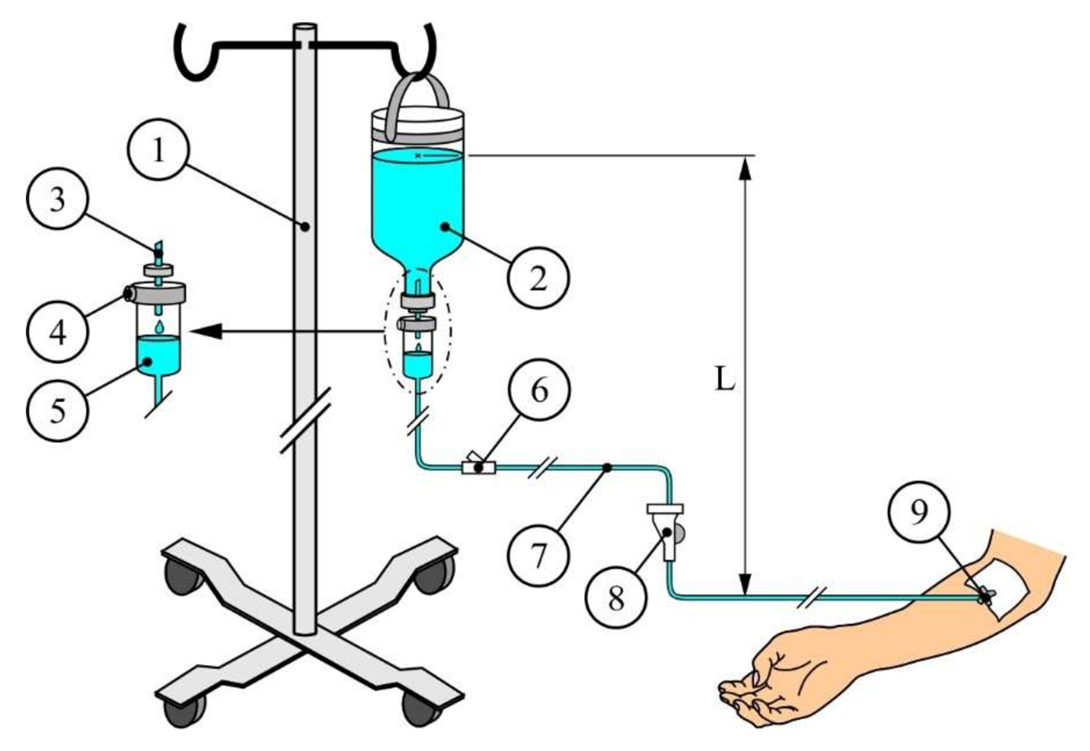A nurse is caring for a client who sustained blood loss. Which of the following is a manifestation of hypovolemia?
Decreased heart rate
Increased blood pressure
Weak pulse
Dyspnea
The Correct Answer is C
Choice A reason: Decreased heart rate is not a manifestation of hypovolemia. Hypovolemia is a condition where there is a decreased volume of blood in the body, which can result from blood loss, dehydration, or fluid shifts. Hypovolemia can cause the heart rate to increase, not decrease, as the body tries to compensate for the low blood pressure and maintain adequate perfusion.
Choice B reason: Increased blood pressure is not a manifestation of hypovolemia. Hypovolemia can cause the blood pressure to decrease, not increase, as the blood volume and cardiac output are reduced. The body may try to constrict the blood vessels to increase the blood pressure, but this is usually not enough to overcome the effects of hypovolemia.
Choice C reason: Weak pulse is a manifestation of hypovolemia. Hypovolemia can cause the pulse to become weak, thready, or difficult to palpate, as the blood flow and pressure are diminished. The pulse may also become irregular or rapid, as the heart tries to pump faster and harder to deliver oxygen to the tissues.
Choice D reason: Dyspnea is not a specific manifestation of hypovolemia. Dyspnea is a term for difficulty breathing, which can have many causes, such as asthma, pneumonia, or pulmonary edema. Hypovolemia can cause dyspnea if it leads to shock, which is a life-threatening condition where the organs and tissues are not receiving enough oxygen. However, dyspnea alone is not enough to indicate hypovolemia.
Nursing Test Bank
Naxlex Comprehensive Predictor Exams
Related Questions
Correct Answer is D
Explanation
Choice A reason: Sliced ham with green salad is not a good choice for a client who has diverticulitis. Diverticulitis is a condition where small pouches in the colon become inflamed or infected. The client should avoid foods that are high in fat, such as ham, or that contain seeds, nuts, or skins, such as green salad, as they can irritate the colon and worsen the symptoms.
Choice B reason: Pork tenderloin with green peas is not a suitable choice for a client who has diverticulitis. Pork tenderloin is a high-fat food that can increase the inflammation and pain in the colon. Green peas are also a source of fiber that can be hard to digest and can cause gas and bloating.
Choice C reason: Turkey sandwich with celery sticks is not an appropriate choice for a client who has diverticulitis. Turkey sandwich may contain mayonnaise, cheese, or other ingredients that are high in fat and can aggravate the condition. Celery sticks are high in fiber and have strings that can get trapped in the pouches and cause infection.
Choice D reason: Grilled chicken breast with white bread is the best choice for a client who has diverticulitis. Grilled chicken breast is a lean protein that can help the client heal and prevent malnutrition. White bread is a low-fiber food that can be easily digested and does not irritate the colon.
Correct Answer is A
Explanation
Choice A reason: This is a correct answer because normal saline is an isotonic solution, which means it has the same osmolarity as the blood plasma. It does not cause any fluid shifts between the intracellular and extracellular compartments, and it can help restore the fluid balance and the blood pressure of the dehydrated client.
Choice B reason: This is not a correct answer because 1/2 normal saline is a hypotonic solution, which means it has a lower osmolarity than the blood plasma. It causes fluid to shift from the extracellular to the intracellular compartment, which can lead to cellular swelling and edema. It is not suitable for rapid infusion, as it can cause hemolysis and hypotension.
Choice C reason: This is not a correct answer because D5W (5% Dextrose in Water) is an isotonic solution when it is in the IV bag, but it becomes hypotonic once it enters the body, as the dextrose is rapidly metabolized and only water remains. It causes fluid to shift from the extracellular to the intracellular compartment, which can lead to cellular swelling and edema. It is not suitable for rapid infusion, as it can cause hemolysis and hypotension.
Choice D reason: This is not a correct answer because D5 1/2 normal saline is a hypertonic solution, which means it has a higher osmolarity than the blood plasma. It causes fluid to shift from the intracellular to the extracellular compartment, which can lead to cellular shrinkage and dehydration. It is not suitable for rapid infusion, as it can cause hypernatremia and fluid overload.

Whether you are a student looking to ace your exams or a practicing nurse seeking to enhance your expertise , our nursing education contents will empower you with the confidence and competence to make a difference in the lives of patients and become a respected leader in the healthcare field.
Visit Naxlex, invest in your future and unlock endless possibilities with our unparalleled nursing education contents today
Report Wrong Answer on the Current Question
Do you disagree with the answer? If yes, what is your expected answer? Explain.
Kindly be descriptive with the issue you are facing.
